Sacred Moments at Wanla Monastery: A Mandala Dissolution on the Art of the Silk Road Trip to Ladakh
- Jennifer Spatz
- Aug 27, 2019
- 7 min read
The village of Wanla was one of the first stops on our ‘Art of the Silk Road’ journey to Ladakh, a stunning region in the North of India which once served as an important gateway to the ‘Silk Road,’ a network of trade routes connecting India with China, Persia, and Southern Europe. Trip leader, Laura Kozaitis, shares her insights into some sacred moments while our group of travelers witnessed a mandala dissolution at Wanla Monastery in Part 1 of a 3-part blog series.

We entered the courtyard of Wanla Monastery, out of breath from the steep ascent. The low, sonorous sound of several monks chanting echoed from an adjacent shrine room. Gylapo, our local guide, had reached the top before us and greeted me with a smile. “Laura-lay, I just found out from a monk that an important Rinpoche is here and they are doing puja.” It was an auspicious beginning to our first stop on Global Family Travels' Art of the Silk Road tour. For our group to encounter a high lama leading prayers and rituals to a multitude of monks right off the bat bode well for our group’s mission. Rather than just hitting usual spots on the travel circuit, we’d come to Ladakh to experience local life within the context of its rich, cosmopolitan heritage. A Silk Road stop for generations, Ladakh’s arts and religions reflect a culture that traded not only in the exchange of goods, but ideas, people, beliefs, and creativity.

Welcoming strangers is a longstanding tradition in Ladakh, one that all members of this high mountain society, no matter their station, extend with kindness and grace. As we enter the temple, single file, we stepped onto the path of pilgrimage. I thought of the traders, artisans, merchants, and monks who made their way through Northern India and Central Asia in caravans. Their journeys could take years and could be quite dangerous. Many would stop for blessings to ward off these threats at shrines, temples, and mosques. How many had come before us? Hiked this hill with their white silk scarves? Entered these temples for a blessing before continuing their journeys?
The Rinpoche, sitting on a throne above the monks, swayed back and forth as they prayed. He turned the lifted a page from the prayer book and set it on top of the stack. I bent my myself in reverence at his throne and offered my scarf and a small envelope of rupees from the group. It was a modest offering that I knew the monks would appreciate as they continuously prayed for the community and depend solely on donations. The Rinpoche was a middle-aged man with wire-rimmed spectacles framing his intense eyes. He accepted the scarf and placed it back around my neck and reached for a stack of multicolored blessing cords. He gave one to each member of our group as they came to him with their scarves. The strings are sacred and empowered with the blessing of the lama and his retinue, and offered to devotees. I wrapped it around my wrist after I sat on one of the cushions the monks arranged for us to sit with them as they continued the puja.

In the center of the room stood a structure curtained on all four sides. The monks pulled out their damarus and horns, blasting the room with a cacophony. After some thirty years of traveling to Ladakh, the blaring sound still startles me—I think that’s the point. A jolt into the present moment, without the white-noise of my internal dialogue. After they set their instruments aside, their chanting resumed. We watched their hands gliding in unison with graceful formations known as mudras, a spiritual sign language key to Buddhist ritual prayer. Their fingers and palms casts long shadows of possible meaning on the walls of my ego encased consciousness. I wish I knew more about this puja and the significance. Gyalpo leans into my ear. “Today is the last day of their sand mandala. They will dissolve it in the river below the monastery in about an hour or so. Do you want to stay?”
My heart jumped. My eyes widened. I’d been so captivated by the monks that I hadn’t even noticed the red canopied tent set up in the center of the room. In all of my summertime visits, I had never witnessed a sand mandala creation, let alone the ritual dissolution of one.
I signaled to my travel companions that I had news and, in an awkward yet respectful crouch, I waddled along the floor like a goose to each of them and whispered. “They are dissolving the mandala behind the curtain today, and have invited us to stay and witness the ceremony. It’s a great opportunity. I think we should stay.” Everyone nodded in agreement. A man with a weathered face and a young monk got up and exited the room. They returned soon after with a tray of teacups and a big thermos of butter tea. An acquired taste for most foreigners, the tea is salty and, well, buttery. I’ve learned to love it, as it helps the body stay balanced in this high desert climate. We sip our tea, watch the monks, and wait.
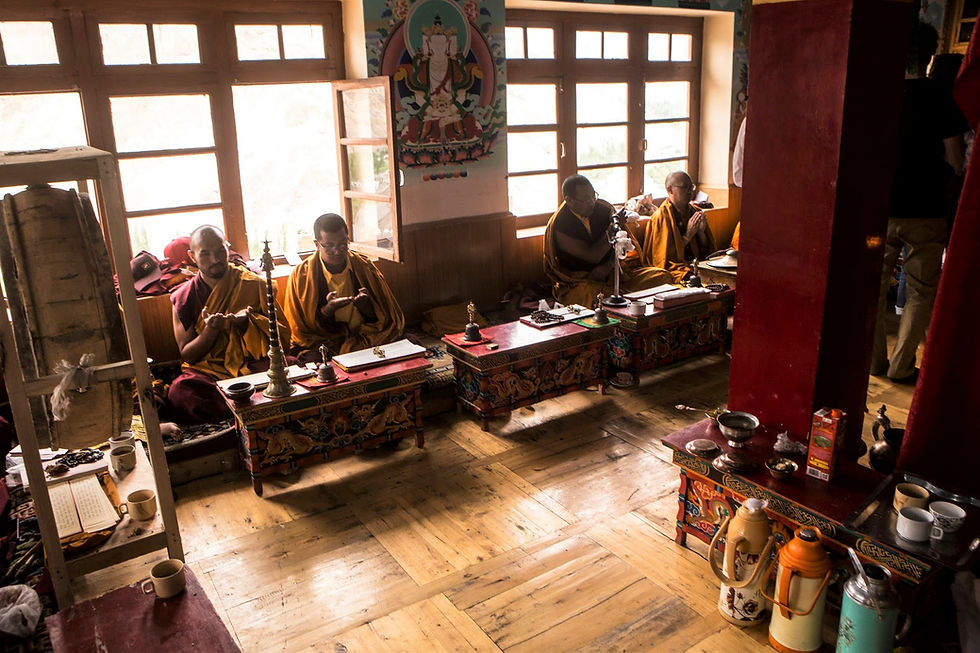
An hour passes and just as I think each interlude of drums and horns might be the last, more chanting. Some of us are getting achy knees and contorting our legs to stretch them without drawing attention. Gyalpo instinctually reads the situation and checks in with his monk, who points to his watch. “Laura-lay, he says they will dissolve the mandala at 1 pm. Should we stay or go on to Lamayuru?” Lamayuru, known as ‘moon land’ for its lunar-like landscape, has a monastery on today’s itinerary, about an hour away.
I realize that I had failed to account that we are on ‘Indian time.’ Another hour could, realistically, be a gross underestimate, given the (it was now 11:30). We’d walked into extraordinary opportunity. Even though I’d seen sand mandalas in the states, those experiences were more of a performance for the curious than a deeply embedded part of a religious community’s liturgical year. What to do?
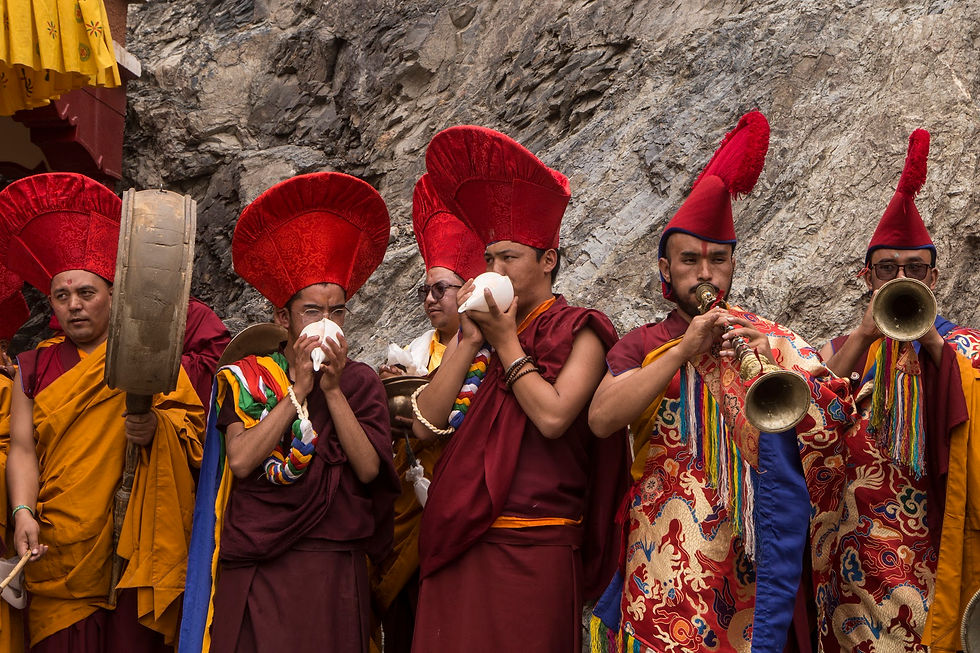
Gyalpo leans over and tells me the mandala is for the deity Vairochana (the cosmic Buddha of Light), and that the monks were now chanting verses from the Sarvavid Vairochana tantric text. There are no coincidences here, I think, as I feel the hairs on my arms raise. The 11th Century temples frescos we’d be seeing tomorrow at Alchi Monastery had mandalas of Sarvavid Vairochana “Universal Knowledge Intensely Luminescent” form of Vairochana as the totality of Tantric Buddhist teachings.
A small group of younger monks enters the room. One takes off his sunglasses. All shut off their cell phones and find a seat. I realize that many more monks were showing up as the culminating event drew near. There was a distinct likelihood that we would likely arrive at Lamayuru only to discover most of the rooms locked because their monks are here for the dissolution ceremony.

I explain my rationale to our guests, who I can feel getting anxious. Fortunately, we are a flexible bunch and surrender to sacred time. We are, however, getting hungry. A monk shuttles in, as if on cue, and hands us each a white bag. Inside is a sleeve of biscuits, a juice box, local apricots, and a chocolate bar. Known as tsok, I advise the group that our care package is an offering to sponsors of the ceremonies, blessed by the monks while in prayer. I encourage them to enjoy the treats and to save any of these consecrated snacks they don’t eat to share with the children down in the village.

A short monk in a dusty red visor gestures us to view the mandala. We carefully stand up and attempt to wake up our legs. When we poke our heads inside the tented structure, what we see is much more elaborate than anything I’d witnessed stateside. The mandala is stunning. Each element was not only outlined but piled so that the ornaments had three dimensions.

Dr. Rick’s wife Kathy whispered to her daughter and me as we moved back to our spots on the floor. “Did you see how detailed that was? I saw a mandala being made in Colorado once, but it was flatter and less detailed. I think the monks didn’t have time to do it this way, being that they were on a tight schedule.” Yes. The monks who travel abroad to share this sacred art form are not unlike the many tour groups passing through Ladakh each year. They have to balance logistics in unfamiliar places, managing obligations, and expectations. I was so happy our band of folks chose to embrace the synchronicity of the day and surrender to sacred time.
The monks stood up. Flipping their red robes over their shoulders, they picked up their instruments. We followed them as they filed out into the courtyard. The small assembly of locals had grown to a crowd to meet them. We looked out at the valley below us. A long procession of school children was ascending the mountainside to join us.
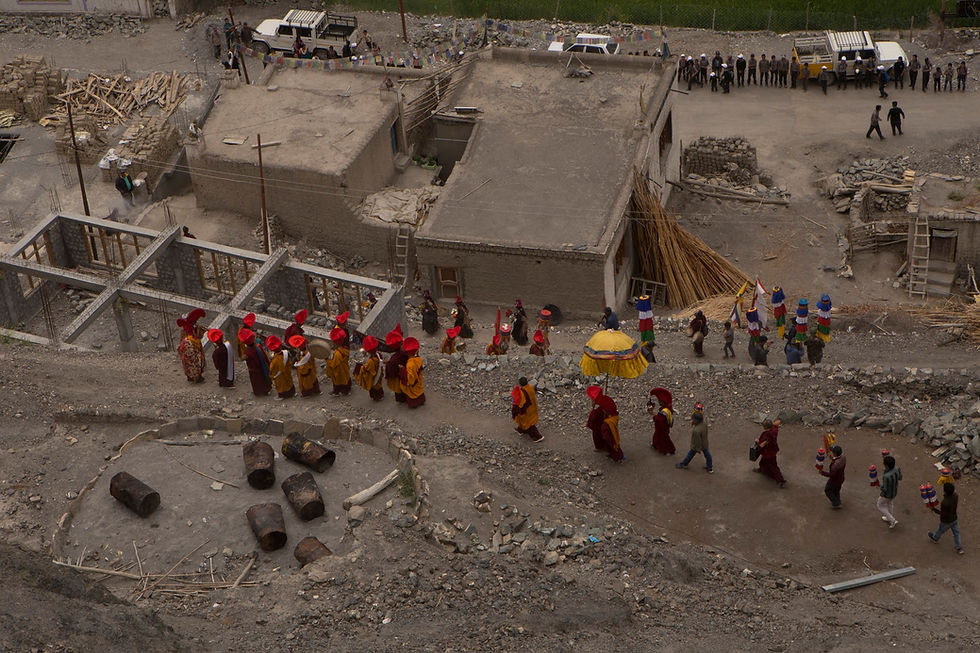
This must be it, I thought. The monks chanted and blasted more horns. The villagers and some monks started rooting around in their pockets for scraps of paper. But why? A monk waved us to come back inside the temple with some of the locals. A monk with a huge brush stood over the mandala. All it took was a swoop. The brush scattered and then pushed those vibrant lines of color into a dusky mound. Monks and laypeople carefully held out small envelopes, pieces of paper, or whatever they had to receive a small scoop of sand. I dug around in my bag, catching my fingers on loose silk threads hanging from the end of my long white scarf, grabbing the only paper that I had. I stuck out an old receipt from Target. I chuckled to myself as I creased it into a V and held it out to the monk. He moved quickly to get to all of us. I steadied my hand as he poured a small pile of what was once the intricate model of the universe into this wrinkled remnant of my ordinary life back home.
Grains of sand. Threads of silk. Enduring hospitality. Our group was so grateful to be included in it all. We folded our packets, tucked them away in our bags. We slid into the procession following the monks to the river—grandmothers with braids and coral necklaces, children with school caps, men clutching their prayer beads, young women with bouquets of flowers—a stream of humanity immersed in this sacred moment.
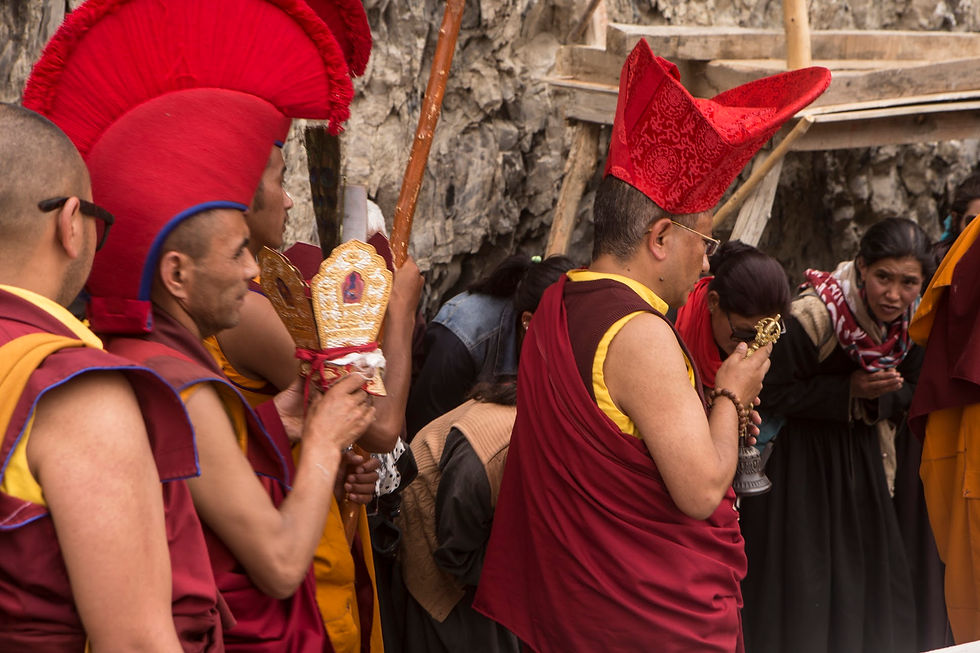
Monks carry sacred objects to the river for the sand mandala disbursement

The Rinpoche's throne was carried to the shore the river so he could lead the final prayers
Laura Kozaitis co-founded the Siddhartha School Project in Ladakh, which this Art of the Silk Road tour supported. Video credit goes to Laura.
Photo credits: Dr. Rick Meinig
.

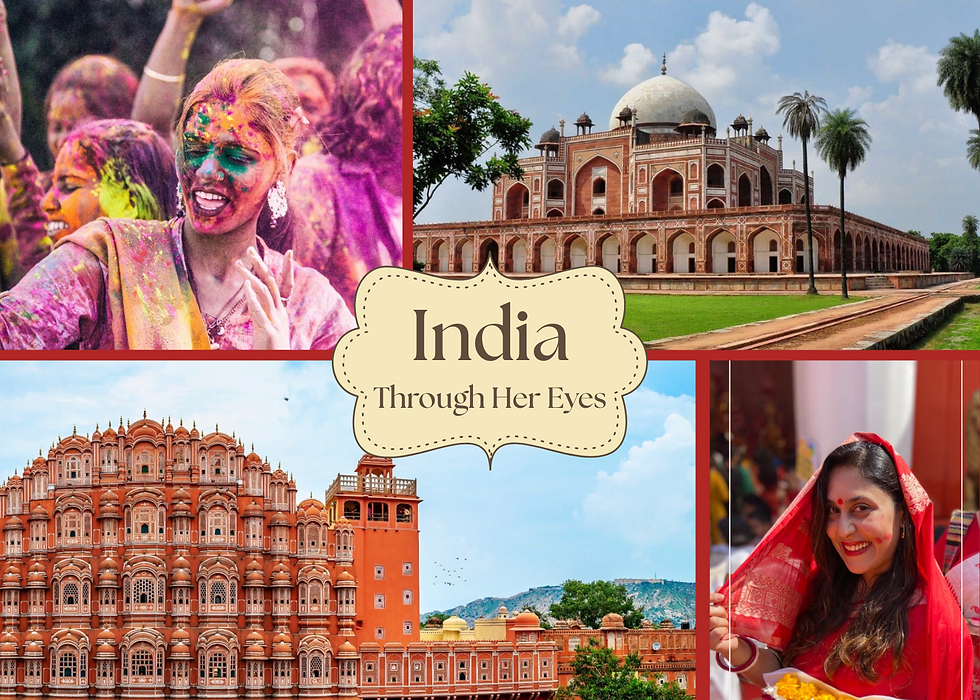


Comments